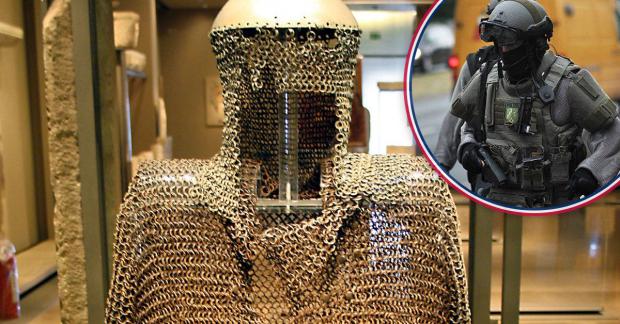
Breaking News
 LIVE ELECTION RESULTS: New York mayor, NJ & VA governor, Prop 50, Trump endorsements, latest vote
LIVE ELECTION RESULTS: New York mayor, NJ & VA governor, Prop 50, Trump endorsements, latest vote
 Sen. Markwayne Mullin Reveals Schumer Held Secret BACKROOM MEETING...
Sen. Markwayne Mullin Reveals Schumer Held Secret BACKROOM MEETING...
 RIP NYC - Muslim Communist Zohran Mamdani Wins New York City Mayoral Race
RIP NYC - Muslim Communist Zohran Mamdani Wins New York City Mayoral Race
 Dramatic Footage Shows UPS Cargo Jet Crashing At Louisville Airport
Dramatic Footage Shows UPS Cargo Jet Crashing At Louisville Airport
Top Tech News
 Japan just injected artificial blood into a human. No blood type needed. No refrigeration.
Japan just injected artificial blood into a human. No blood type needed. No refrigeration.
 The 6 Best LLM Tools To Run Models Locally
The 6 Best LLM Tools To Run Models Locally
 Testing My First Sodium-Ion Solar Battery
Testing My First Sodium-Ion Solar Battery
 A man once paralyzed from the waist down now stands on his own, not with machines or wires,...
A man once paralyzed from the waist down now stands on his own, not with machines or wires,...
 Review: Thumb-sized thermal camera turns your phone into a smart tool
Review: Thumb-sized thermal camera turns your phone into a smart tool
 Army To Bring Nuclear Microreactors To Its Bases By 2028
Army To Bring Nuclear Microreactors To Its Bases By 2028
 Nissan Says It's On Track For Solid-State Batteries That Double EV Range By 2028
Nissan Says It's On Track For Solid-State Batteries That Double EV Range By 2028
 Carbon based computers that run on iron
Carbon based computers that run on iron
 Russia flies strategic cruise missile propelled by a nuclear engine
Russia flies strategic cruise missile propelled by a nuclear engine
 100% Free AC & Heat from SOLAR! Airspool Mini Split AC from Santan Solar | Unboxing & Install
100% Free AC & Heat from SOLAR! Airspool Mini Split AC from Santan Solar | Unboxing & Install
Bulletproof chainmail? Next-gen fabric stiffens on demand

A new example of this type of shape-shifting technology is modeled on ancient chain mail armor, enabling it to swiftly switch from flexible to stiff thanks to carefully arranged interlocking particles.
The material was developed by scientists at Singapore's Nanyang Technological University and Caltech in the US, who describe it as a type of "wearable structured fabric." In physics terms, its capabilities are enabled by what's known as a jamming transition, the same principle that causes vacuum-sealed rice or beans to stiffen when packed up tight, leaving the particles with little room to move.
The team set out to develop a fabric that can be easily transitioned from soft and foldable to rigid and load-bearing, pointing to the way Batman's cape can turn into a glider in 2005's Batman Begins, as an example. To do this, the team began investigating how structured but hollow particles could be interlocked to form a fabric with stiffness that could be altered on command.
"Inspired by ancient chain mail armor, we used plastic hollow particles that are interlocked to enhance our tunable fabrics' stiffness," says study author Assistant Professor Wang Yifan. "To further increase the material's stiffness and strength, we are now working on fabrics made from various metals including aluminum, which could be used for larger-scale industrial applications requiring higher load capacity, such as bridges or buildings."
The team's octahedron-shaped particles are 3D printed with nylon plastics into a chain mail-like arrangement, which is then encapsulated in a plastic envelope and compacted using a vacuum. This increased the packing density, pulling the carefully designed particles in and increasing the points of contact between them, resulting in a structure that is 25 times more rigid.



